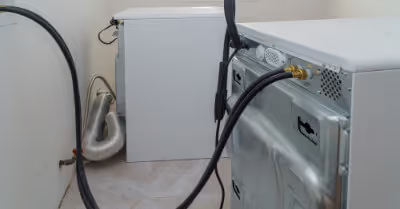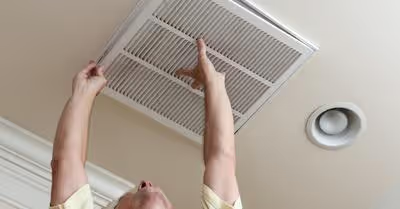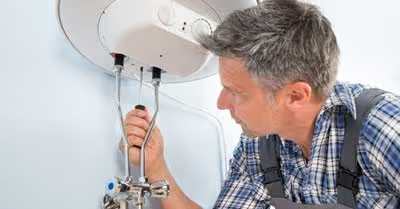Table of Contents
Single-Pole Switches
The most common light switches in a home are, without a doubt, single-pole switches. They are rather easy to understand: with their two screw terminals and a ground screw, you won't find it hard to identify the different functions. One terminal for the "hot" wire feeding on the power source (more on the colors further on in the article), while the other one is for a second hot wire, referred to as switch leg, running between the switch and the light fixture. When you turn the power on, the switch leg brings power to the unit and will turn on the light.
Swapping single pole switches out will take you around 15 minutes and cost you very little: don't hesitate to try it!
Smart Home Devices
Another reason why you might want to learn how to wire a light switch might be to turn your house "smarter." That is also a relatively undemanding process, but you'll need to pay attention to some details if you want to do everything the right way.
Smart home devices are a great invention, and having some in your house will make a difference. Not only do they make life at home less complicated and facilitate your everyday life: they will also introduce more fun in your daily tasks and will make everything more interactive. While smart home devices were once a novelty, nowadays, an increasing number of products are landing on the market, each offering different functionalities and with different characteristics.
When we think about smart home devices, one of the first things that come to mind is probably the automation and control of your lights. When you picture an ideal smart home, chances are you first think about clapping your hands to switch the lights on. And you are not so far from the truth.
If you are starting to put together your smart home, you'll want to control your lighting with smart switches. Of course, you can hire an electrician to do the work, but if you feel confident, there is no reason why you shouldn't try to wire the light yourself. Keep reading to find out how.
Mind you: when you are trying to wire smart switches, you'll need to be equipped with neutral wire to maintain a wireless connection. In such situations, you'll need to pay extra care to the manufacturer's directions when installing the switches.
What Will You Need
To help you go through a smooth process, we put together a concise but complete guide about how to wire a light switch. If you are looking forward to having an automated hardwired light switch, don't worry! You've landed in the right place.
First of all, make sure you have some neutral wire. It will work with most hardwired automated light switches, as very few use incandescent wires. If you are using LED lights, you'll need fluorescent or energy efficiency bulbs under 20W.
When you are replacing an old light switch, you should have your screwdriver on hand, a wire stripper, a voltage tester, and your new switch. Don't forget to supply yourself with some needle nose pliers as well and some electrical tape.
What You Should Know Before You Start
It is not uncommon for many to be afraid of doing electrical work for fear of getting shocked or causing a fire. Such fear is perfectly understandable, but you must be aware that there are many simple electrical processes you can do yourself in all safety.
Be careful: if you want to automate your lighting system, make sure you contact an electrician if you have a switch with the neutral running directly to the light. It will save you lots of problems and frustrations.
Don't forget to switch the power off before touching any wires or switch terminals. If your panel doesn't have breakers but fuses, unscrew the appropriate fuse and remove it.
Also, before getting started with the "dirty job," here are some things you must know about wiring:
- The white wire is the neutral one.
- We will refer to the black wire as the hot wire. Keep in mind that it might be red-colored on some devices. It goes to the brass screw or into the hole in the back of the lighting system.
- The green wire or the bare copper one is the wire that attaches to the electrical box or the green terminal on the switch.
Keep in mind that if a white wire has a black label or a black tap on it, it means it cannot be classified as neutral anymore, as it has been used as a black or colored one in the switch. If you get stuck, don't forget that there are several useful diagrams you can make use of to help you with the process.
As soon as you start feeling uncomfortable with the task, or you get confused with the wiring system, don't hesitate to call an electrician! They will know how to solve any of your problems and prevent you from causing damage to your home.
How To Wire A Light Switch
When your light switch is not functioning as it should, chances are you might have to replace your current switches with more modern ones, with screw terminals on each side and holes on the back.
Start with loosening up the screws on the side of the device. Then, remove the wires that are getting out of the switch. To do so, you might have to insert the screwdriver's blade under the hole and push in as you pull the wire loose.
You must place the neutral wire on the same side of the silver screw or connect it to it. If your switch has off an on functions on its body, and it is the only switch controlling the light, that switch is a single-pole one. Replacing such a switch consists of following these steps:
- Turn the power off at the main circuit panel
- Unscrew and remove the switch plate. To make sure the voltage is off, it might be a good idea to use a voltage tester.
- Take the switch from the electrical box (unscrew it with your screwdriver) with all of the wires still attached. Keep in mind there should be a hot wire coming in and a return wire, which might be red or black (or even another color but NOT green). Sometimes a grounding wire might also be present.
- Disconnect the old switch wiring.
- Compare the new switch with the old one and find out the new locations for the screw connectors. With the power off, matching up the connectors is easier. You won't have to disconnect all the wires at once, with the possibility of getting confused. Instead, unscrew and connect each wire one by one.
- For the connection, take off about half an inch of insulation with a wire stripper and twist it clockwise into a loop with some pliers. Wrap the loop around the terminal screw and hook it clockwise around the crew. Such a step will make the loop wrap tighter when you use a screwdriver.
- Do that will all of the wires
- Push the new wired switch in the electrical box and screw it in place.
- Turn the power on and check how well you've done the job! Test the switch for proper operation, if it works correctly, you can pat yourself on the shoulder!
Wiring A 3-Way Light Switch
If you haven't found answers yet on how to wire a light switch, it might be because you don't have single-pole switches, but rather 3-way light switches, don't despair! Even if less common, the process isn't harder than with single-pole switches.
In any case, you can find here what you need to know to learn how to wire a 3-way light switch yourself.
Start with checking where the power is coming: is it to your light switch first? Or to the light fixture? Even if the most common situation would be the first one, in either case, you'll need to stick to the following steps:
- Turn the power off from the electrical panel
- Add the electrical box for the 3-way switch and make sure it can accommodate the extra wires. If it can't, ensure you get a larger switch box.
- Connect all the wires to the new three-way switches with ground screws. You can identify the different switches by looking at the label on the terminal or by paying attention to the different colors.
- Wrap black electrical tape around the ends of all of the white wires
Follow just the same steps you'd follow with wiring a single-pole switch.
Recent Articles
















